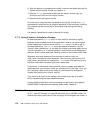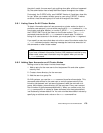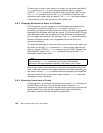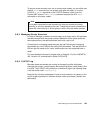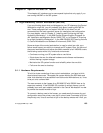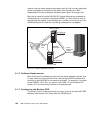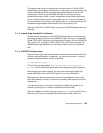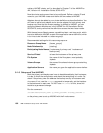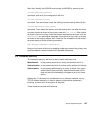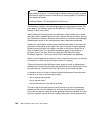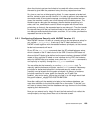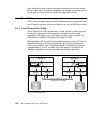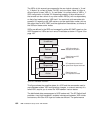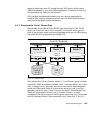186 IBM Certification Study Guide AIX HACMP
ordinary HACMP cluster, as it is described in Chapter 7 of the
HACMP for
AIX, Version 4.3: Installation Guide
, SC23-4278.
Now the cluster environment has to be configured. Define a cluster ID and
name for your HACWS cluster and define the two nodes to HACMP.
Adapters have to be added to your cluster definition as described before. You
will have to add a boot adapter and a service adapter for both primary and
backup cws. Now that the cluster topology is defined to HACMP, you can
configure Network Modules as in the
HACMP for AIX Installation Guide
,
SC23-4278, and synchronize the definitions across the two cluster nodes.
With the ssp.hacws filesets comes a predefined start- and stop-script, which
has to be defined to HACMP as part of the application server definition, which
in turn has to be included in a resource group.
Recommended settings for this resource group are:
Resource Group Name [hacws_group1]
Node Relationship [rotating]
Participating Node Names [“nodename of primary cws” “nodename of
backup cws”]
Service IP label at least the hostname of the primary cws
File System the name of the file system, most probably
/spdata
Volume Groups the name of the shared volume group containing
/spdata
Application Servers the name you gave the application server before
9.1.6 Setup and Test HACWS
Both the primary and backup cws have to be addressable by their hostname,
in order to finish the configuration and check that everything is in order. So,
check if the primary cws can address the backup cws by its hostname and
vice versa. If not, use the
ifconfig command to temporarily set the interface
to the hostname on each cws. Do
NOT
use smit chinet for this, since this
would be a permanent change.
Run the command:
/usr/sbin/hacws/install_hacws -p primary_hostname -b backup_hostname -s
on the primary cws to set up HACWS with the 2 node names.



